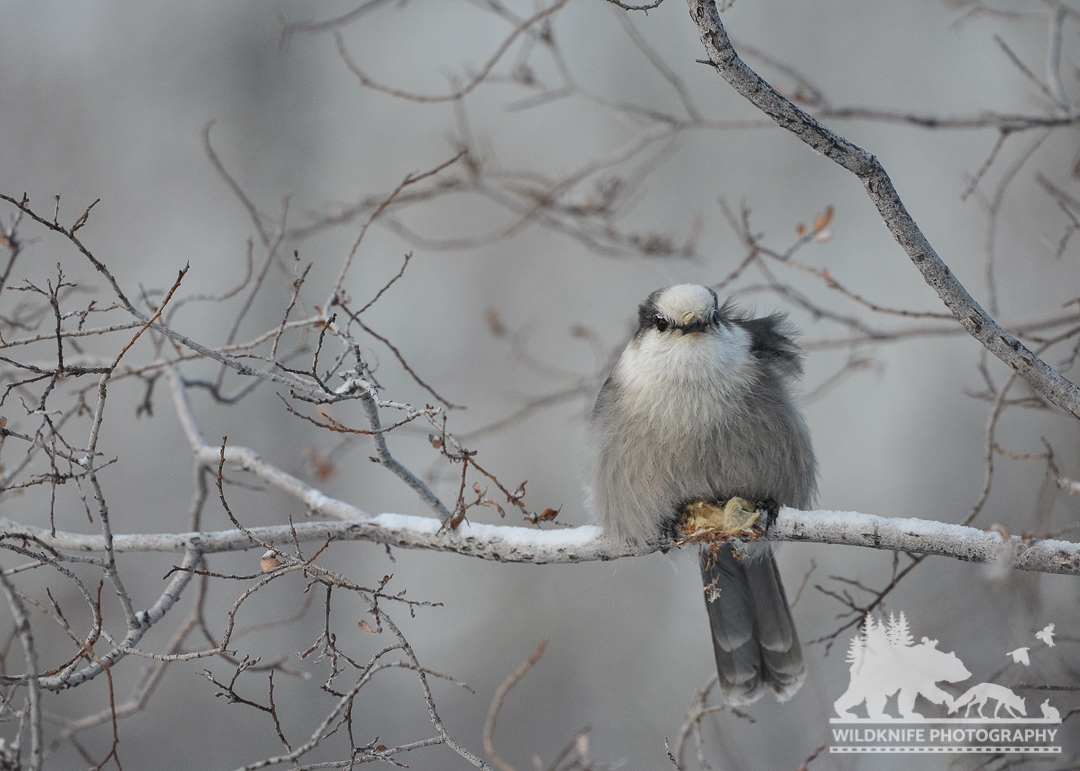Welcome back! This week we’ll be looking at this awesome little corvid that has a number of aliases.
The Grey Jay, (Gray if you are American) is once again known as the Canada Jay which was also its name before it was the Grey (or Gray) jay. Confused yet??
Other names this sharp little bird is known as include camp-robber and Whiskeyjack. In my research on this bird, I learned that “whisker-jack” can be found in English literature as early as 1740, nearly one hundred years before the name Canada Jay would first be used.
Whiskeyjack is an English name derived from the Indigenous Cree (and other Algonquin family languages) name for the bird, Wisakedjak. In Cree culture (and some other First Nations peoples of the subarctic region) Wisakedjak is a sacred figure who is known as a trickster and in some cases, for being among the creators of the world.
Canada Jays are really tough birds. They build their nests in January and early February and breed and raise chicks in later February and into March. Males choose the nest site in a tree on the edge of a forest clearing usually in a spot that gets a spot of sun for warmth. He does most of the building in the early stages and his partner will help once the base of the nest is built. It usually takes the pair three weeks to complete their nest.
To keep warm in the frigid months Jays have incredibly thick plumage that they fluff up to cover their legs and feet. They will often bask in a sunbeam on a spruce branch out of the wind.
Breeding pairs stay together as long as both birds are alive and a territorial pair will rarely leave each others’ side. The two gather food items and cache morsels by coating them with sticky saliva and then gluing the food items behind flaps of bark, under lichen or in the crooks of branches. They eat just about anything including insects, aquatic invertebrates, carrion, nestling birds, berries, fungi, and small mammals. They will eat ticks from the backs of moose and have been seen feeding on injured animals. They have an extraordinary ability to remember where they have stashed their food.
Canada Jays have begun to show lower breeding success in some southern parts of their range, possibly because higher fall temperatures cause their stored food items to spoil.
These dull looking birds are intelligent and curious. They show little fear of humans particularly when food is involved. Jays will flock together and make a ruckus to chase off owls, ravens or hawks that enter their territory.
The oldest Canada Jay on record was at least 17 years, 2 months old. Banded in 1985, it was recaptured and re-released by a bird bander in Colorado in 2002.
I hope you enjoyed this look at our namesake bird the Canada Jay. Thank you for visiting and have a great week.






